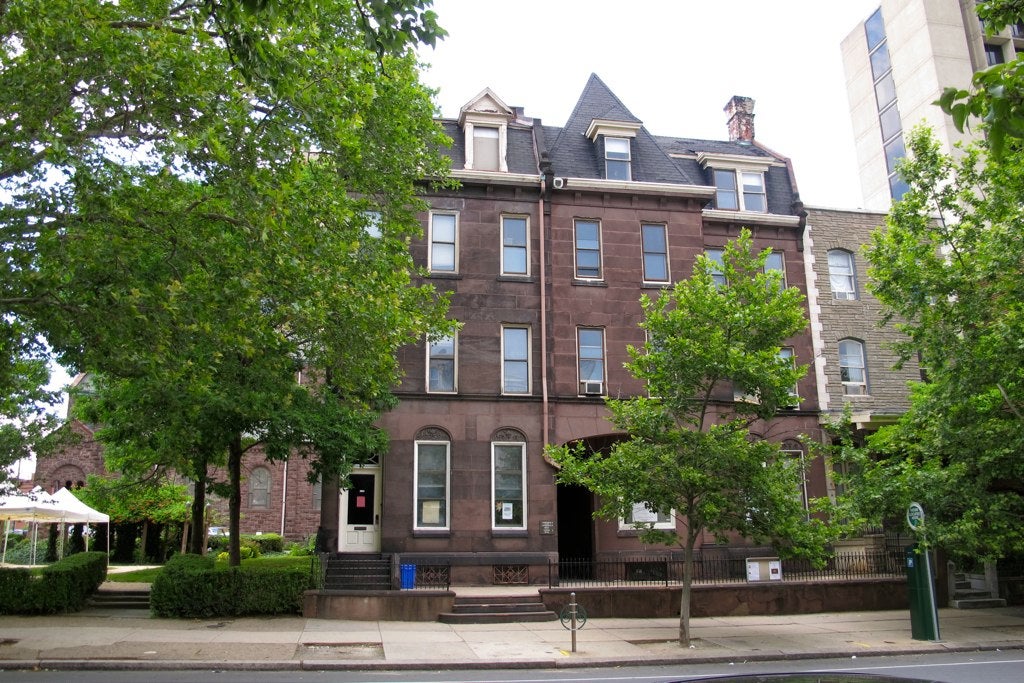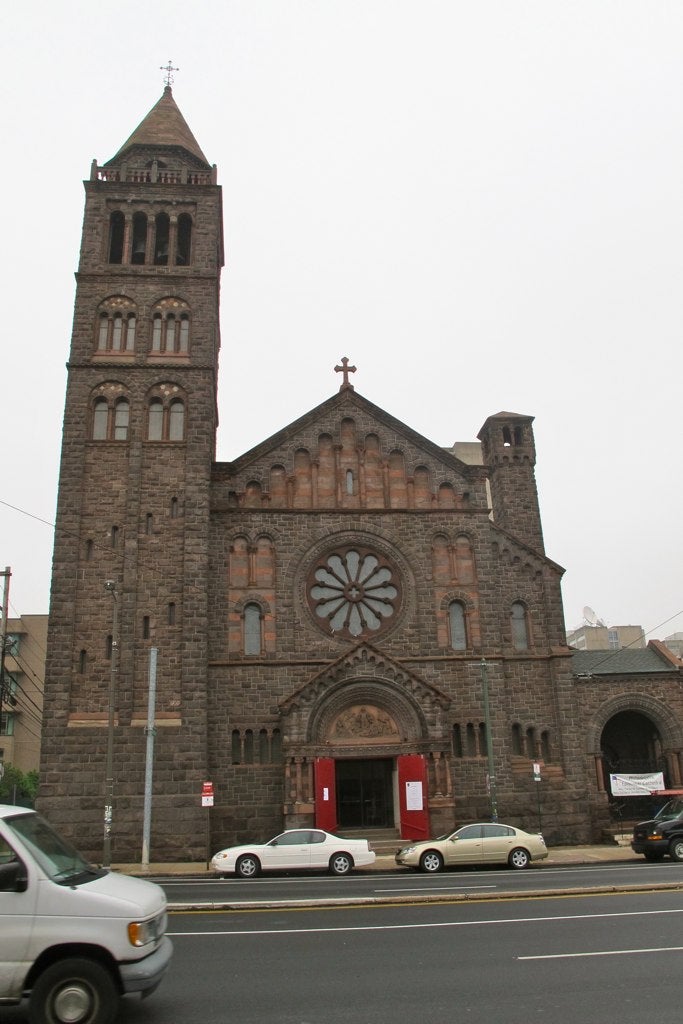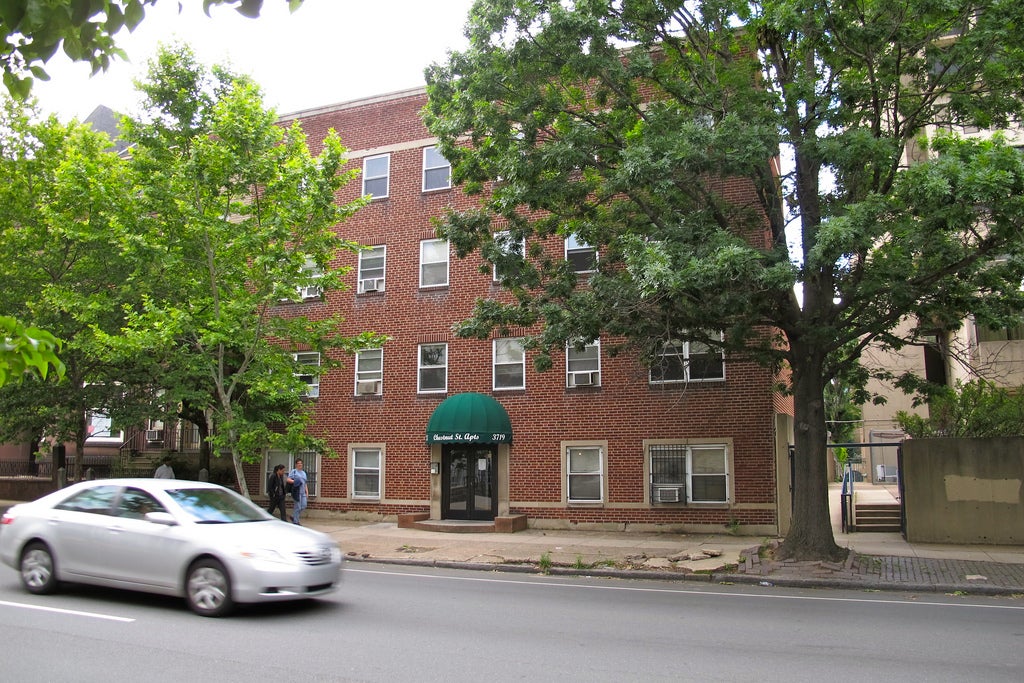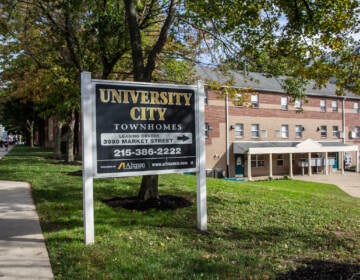Historical Commission OKs demolition of Episcopal Cathedral’s brownstones
The Philadelphia Historical Commission Friday approved the Philadelphia Episcopal Cathedral”s hardship application, granting it permission to demolish two historically designated rowhouses on its campus at 38th and Chestnut streets in order to build a 25-story residential tower that they say will support its mission and social services, and create a stream of revenue that will enable restoration work to the historic Cathedral building.
The commission voted 8-2 in favor of demolition and 9-1 for in concept approval of the new apartment tower. Commissioner JoAnn Jones recused herself because she also serves on the Standing Committee of the Episcopal Diocese.
The Cathedral sought permission for this demolition under a different hardship provision called “necessary public interest,” which is a stricter test, but one that is less clearly defined in the preservation ordinance than financial hardship. The Commission’s past positions on this type of hardship have concentrated on whether or not a proposed project will result in a broad public benefit.
In setting out the Cathedral’s case once again, attorney Neil Sklaroff of Ballard Spahr, LLP, began by clarifying for Commissioner Bob Thomas why the applicant was going the public interest hardship route. That, he said, was because the properties under question have no history or intent of being offered for sale and so do not satisfy ordinary finanical hardship requirements.
Sklaroff continued by outlining the three key bases upon which the public interest case rested: that the demolition and subsquent erection of an income-generating building would allow for 1) preservation of the Cathedral, 2) preservation and enhancement of the religious instiution and 3) continuation of the church’s ministries and community outreach.
Commission Chair Sam Sherman asked for more concrete information on the repair program for the Cathedral tower, and developer David Yeager of Radnor Property Group delineated six aspects of its repair, including installing tie rods, and replacing deteriorating mortar, stone, and mortar joints. Beyond these immediate repairs, he said, the chimney would be repaired and the entire exterior of the Cathedral would be patched as needed; further along still, the Cathedral plans on restoring stained glass windows and addressing moisture issues.
At the conclusion of the applicants’ testimony, Commissioner Dominique Hawkins noted that the immediate repair program sounded like a “good, solid stabilization” plan, but that it fell short of a restoration effort and that the two-page list of bullet point items offered by the applicants was hardly a sufficient document of the work’s intended scope.
And we were off, with Commission members and the applicants pushing back at each other for about two more hours.
For two Commissioners in particular, Hawkins and John Mattioni, the case rested on “pitting the buildings against each other” (Hawkins) and an implied “tradeoff” (Mattioni) that demanded strong reasons for moving forward. During the first round of public comments, Penn history of architecture professor and former Commission member, David Brownlee, speaking on behalf of the Design Advocacy Group, recommended that the Commission table the discussion until it had more formerly ironed out the public interest issues.
John Gallery, executive director of the Preservation Alliance, next accused the presentation by the applicants as having a “very serious series of omissions,” saying that it offered no tangible commitments or evidence of financial feasibilty with regard to the construction of the proposed building. He also pointed out that the Church had found funds to purchase a different, $2.6 million apartment complex a few years ago, and that it had also renovated its own interiors, so money was not necessarily an issue.”The money is for deferred maintenance, not for emergency,” he said. “Obviously, they have means.”
The Cathedral’s Dean, the Reverend Judith Sullivan, retorted that “if alternate means of financing existed, we would not be here before you today.” She added, “the group that feels most grievously about the demolition of these two buidlings is the Church.” The development would not only provide an income stream, she emphasized, but would also provide other resoources, such as a kitchen and parking facilities that are “sorely needed.”
At this point, co-chair Sara Merriman, the designee of the deputy mayor for planning and economic development, Alan Greenberger, acknowledged that the case raised “very difficult questions,” but added that the Commission should accept the proposal, with conditions. But Sherman pressed Yeager, asking if there was any way to commit a greater amount of resources to the Cathedral, beyond the tower repair, perhaps by setting up an escrow. And Merriman asked if the developer could commit to a time frame.
To both, the applicants balked, with Yeager saying such “obligations” would be very difficult and might encumber the development process. Sklaroff insisted that the Commission not “micro manage” or “count pennies” of a project that was being undertaken by a “reputable landowner.”
Merriman offered a motion, the wording of which was fine-tuned at great length and which eventually came to include an amendment, put forth by Thomas. The motion to approve the demolition included three conditions — that a commitment for financing be secured before any permits were sought or work begun, that a building or foundation permit be obtained before demolition begins (a given), and that no certificate of occupancy be issued for the apartment building until the Commission was satisfied that the preservation of the bell tower was complete and that a program for long-term restoration and maintenance of the Cathedral was in place.
Thomas’ suggestion to insert language pertaining to the particular spirit behind this approval — which he said would be looked at as a model for other such cases — emphasized the relation of the income stream to the repairs. Mattioni echoed this sentiment, but Farnham pointed out that none of the six previous public interest cases that have come before the Commission since 1985 requested such “ironclad” explanation of the public interest case. Hawkins, however, said that the cases he cited — related to the Convention Center expansion, the Curtis Institute facadectomy, and a new lab building for the University of Pennsylvania — hadn’t included funding as a basis.
The motion was read again, with the income stream amendment, and passed. Only Hawkins and Mattioni voted to deny the application.
Coming at the end of a very long session, the matter was still not over. Attention next turned to a relatively qucik discussion of the architectural merits of the proposed new building — which since it will rise on historically-designated parcels — falls under the jurisdiction of the Commission. Hawkins summarized the Architectural Committees recommendation of denial — based on the building’s height and massing — and Sklaroff said there’d be “no flexibility” on the height, at which point Mattioni, irritation very clear in his voice, issued a motion for approval in concept. This time, Hawkins was alone in her dissent.
Cases heard earlier by the Commission involved the usual assortment of window and door alterations and/or legalizations (most denied, in accordance with staff and Architectural Committee recommendations), and a request for final approval for proposed signage and lighting at the emerging Hotel Monaco at 5th and Chestnut Streets, which was granted.
WHYY is your source for fact-based, in-depth journalism and information. As a nonprofit organization, we rely on financial support from readers like you. Please give today.







